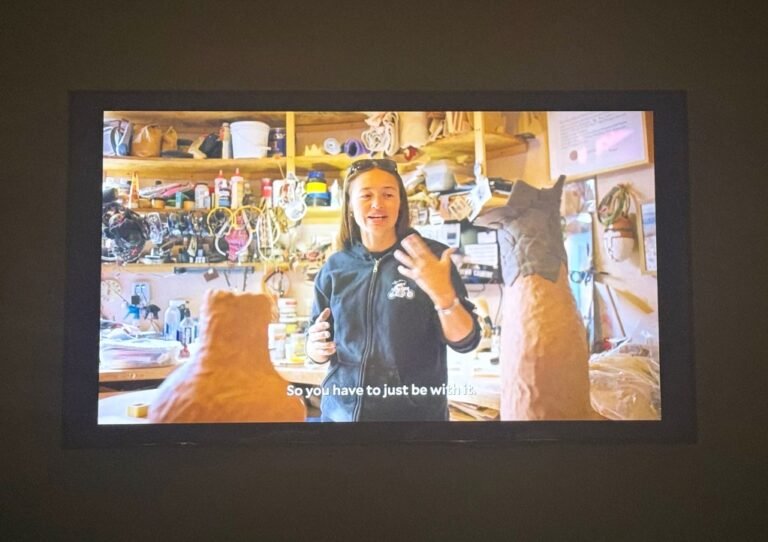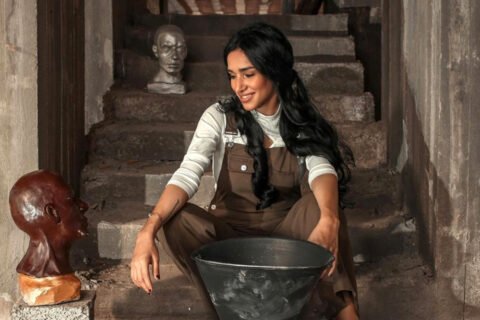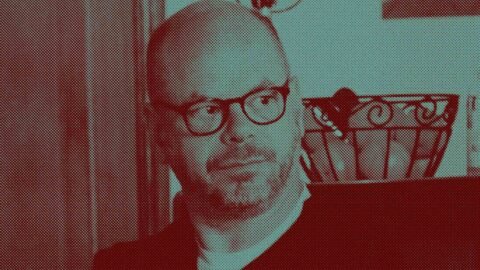
Many non-artists think of artmaking as a solitary endeavor. A recent documentary series by Art21 challenged this sentiment by showcasing the role that community plays in the artistic process.
On Jan. 27, the Benton Museum of Art at Pomona College held a screening of two documentaries by Art21. Founded in 1997, Art21 is a nonprofit organization that aims to expand access to contemporary art through documentaries and public programs.
The two documentaries were “Everyday Icons” and “Bodies of Knowledge” in season 11 of the series “Art in the Twenty-First Century.” Each episode featured four contemporary artists and offered a close look into their artmaking process.
The screening focused specifically on the work of artists Rose B. Simpson and the Guerrilla Girls. Justine Bae Bias, the communications director at the museum, explained to the audience that both featured artists have worked with the Benton in the past.
“It really made an impression on me, and to see both [of] them … in the same season, it was a no-brainer to feature them,” Bias said. “[These episodes are] a wonderful way to see … what goes behind the artwork and how [that elevates] the meaning of the artwork.”
Noor Tamari PO ’22, a former intern at the Benton, works now as an executive assistant at Art21. She introduced the documentaries via Zoom as the audience watched in a casual, intimate environment.
“[COVID-19] gave Art21 a very unique opportunity to examine … how can artists help heal a culture,” Tamari said. “What came out of that [in season 11] was the stories of artists who were making work that was digging into deeper dreams and creating essentially new art forms in the face of cultural identity shock.”
Simpson, the artist featured in “Everyday Icons,” is a mixed-media artist from Santa Clara, New Mexico, who creates work related to stereotyping and nurturing Indigenous culture.
Simpson emphasized the influence of community and Indigenous heritage on her art, focusing specifically on her relationship with her mother and daughter. Simpson’s mother is the person who first taught her to use clay — a skill she is now passing down to her own daughter.
“There is no separation between art and life … to be able to make work that’s building a conversation together is a beautiful chance to heal,” Simpson said. “Within the indigenous world … we have this big heart to exist and empower ourselves and to change the narrative and express what it means to carry this story forth.”
One of Simpson’s primary projects is a series of both miniature and life-sized clay sculptures of indigenous ancestor figures. She makes her artistic process tangible through visible fingerprints in the clay.
“We’re trying to understand ourselves and be graceful and compassionate and accepting of all the many things that we all are,” Simpson said in “Everyday Icons.” “I’m trying to reveal our deep truth and that deep truth is [a] process and so why would I hide that process? To show the actual making of something is our power.”
The Guerrilla Girls, featured in “Bodies of Knowledge,” are an anonymous collective of women artist-activists who have been challenging systemic inequalities in the art world since 1985. The interview featured “Frida” and “Kathe” (pseudonyms), two of the founding members of the collective.
Iconic in popular culture for disguising their identities with gorilla masks, their approach to activism consists of sharing statistics about discrimination against women artists and artists of color on posters with dramatic headlines.
“There’s nothing worse than the word ‘art appreciation.’ It implies that you’re just there awestruck and whatever you’re being fed you appreciate,” Frida said in “Bodies of Knowledge.” “Art is really about discourse and discussion.”
Kathe reflected on the exclusion of women artists, who are often only recognized after a lifetime of work, if at all.
“From the beginning, we have been fighting against racism, sexism and the death hold that wealthy people and wealthy institutions have on art and culture,” Kathe said. “What artists have to say about [their] art has not always been considered important by the arbiters of the art world.”
Attendee Ananya Goel PO ’24 found that Kathe’s statements about the lack of diversity in the art world did not reflect her experience as an intern at the Whitney Museum of American Art.
“[The museum was] working so much with modern and contemporary feminist artists that I felt like things were better than I expected,” Goel said.
Both episodes ask their audiences to make space for diverse discourse in art, be it in museums and art galleries or the artmaking process.
Attendee Sula Ferrer, a local artist, was surprised by the degree of artistic innovation present in the documentaries, such as in the work of Daniel Lind-Ramos, who creates vivid sculpture assemblages using objects found on the beaches in Loíza, Puerto Rico.
“The audience [might not be] familiar with how much intention goes into [artmaking],” Ferrer said. “It was really refreshing to see how people can look at items and completely reconceptualize them.”





